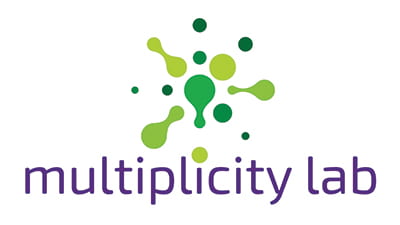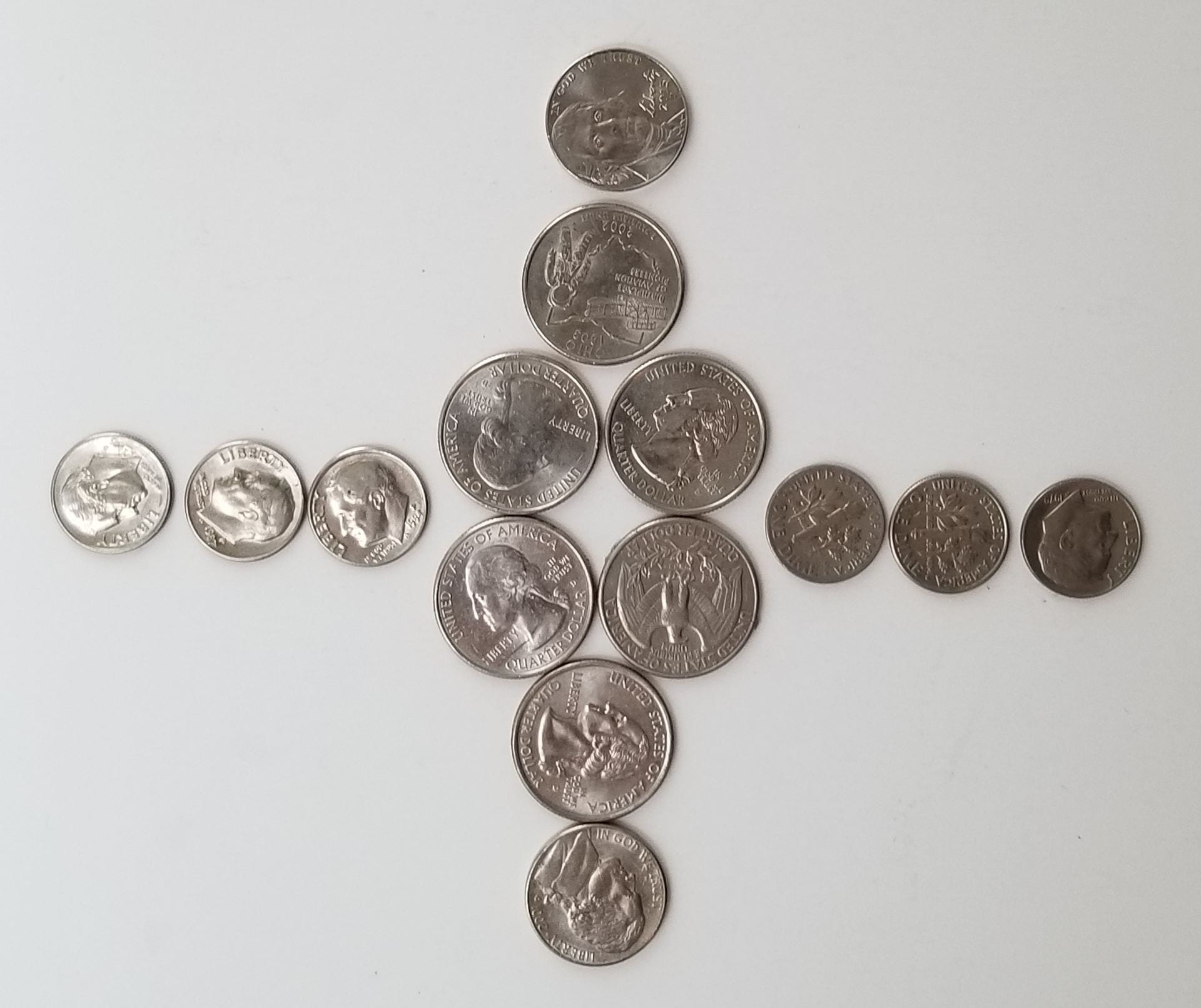Image of the Week: Patterning with Coins
September 5, 2021Patterning with Coins
Have a look at the image of the week: What patterns do you see? You might first notice that there is a structure to this arrangement of coins. You might count the coins in the center, on the left and right, and on top and below, decomposing the structure into symmetrical components. You might also notice along the way that while all the coins are silver, they are not all the same. The type of coin then becomes part of the overall pattern and structure. Here is just one way you or your students might decompose the structure into pieces of a larger pattern:

Students might also notice that there are patterns in the value of the coins as well. Each arm of the figure is worth 30 cents (3 dimes = 30 cents; 1 nickel and 1 quarter = 30 cents). However, if students decompose the structure in different ways – say by seeing all the quarters as the center – then the patterns in the coin values shift, too.
Just noticing and naming these – and any other – patterns is valuable mathematical work. But consider the ways that you might extend this activity. If you teach older students, you might invite them to see this image as the first case in a sequence of growing coin arrangements.
- How could you extend this pattern?
- What could Case 2 look like? Case 5? Case 10?
- If students are intrigued by the values of the coins, you could ask, What could the value of Case 2 be? Why? How does the value grow with each new case?
As always, you can use this image as an entry point for students to create and investigate their own coin patterns. What patterns might they make? Students could create, share, discuss, and compare their own coin pattern images. You could spend days on this idea alone. Try this – or any of our coin pattern activities – with your students tomorrow.
To multiplicity, cheers!
Jen Munson and the multiplicity lab group
Read the Archive
Get the Image of the Week
Each week we bring you a new image and activity you can do with your students tomorrow, and we spotlight a feature of the mathematical work that we think is important for students’ learning and your teaching.
Stay connected and see what's new.

